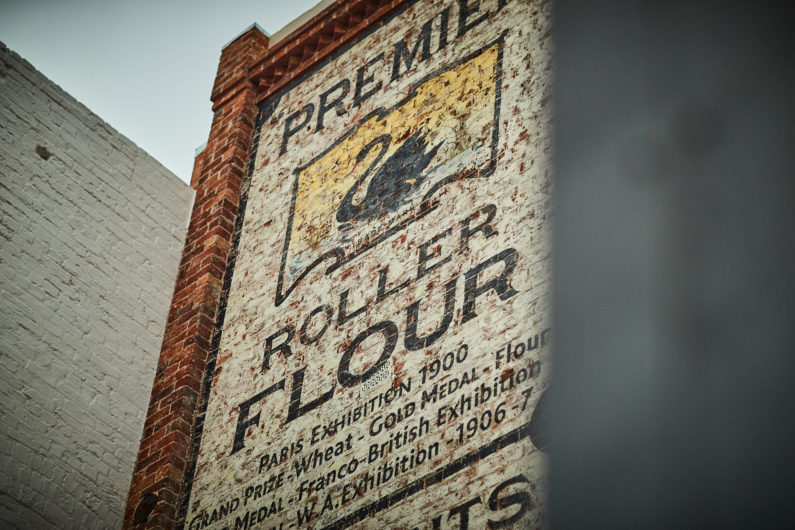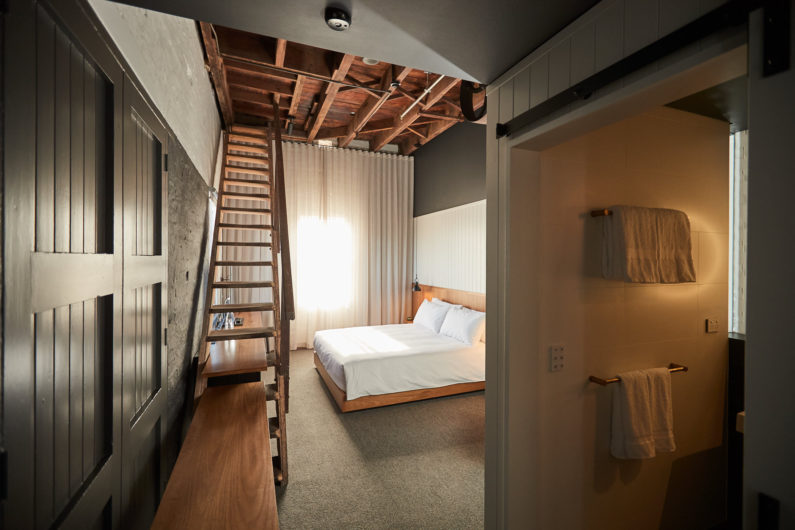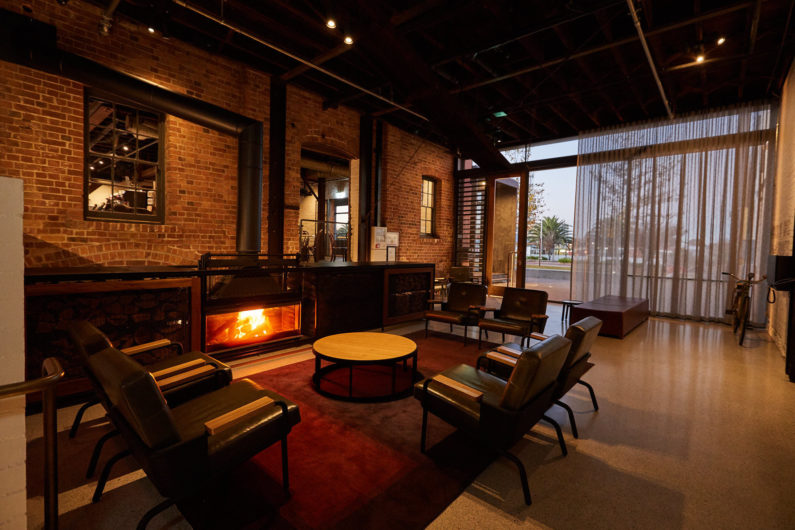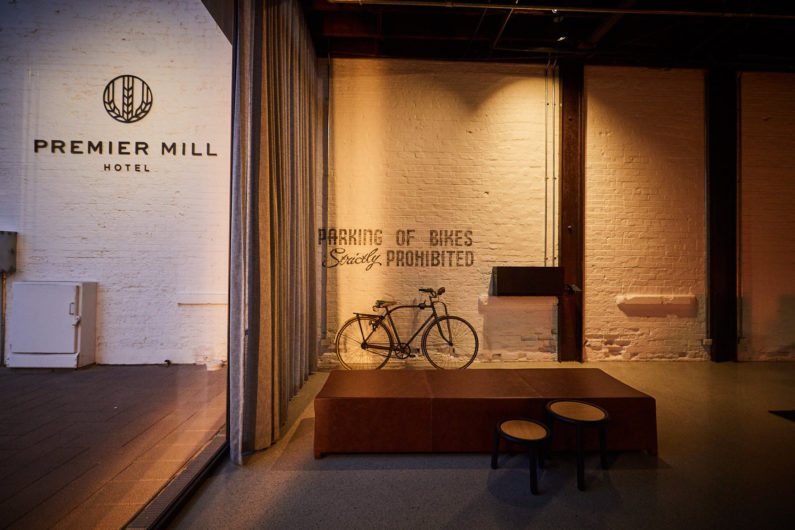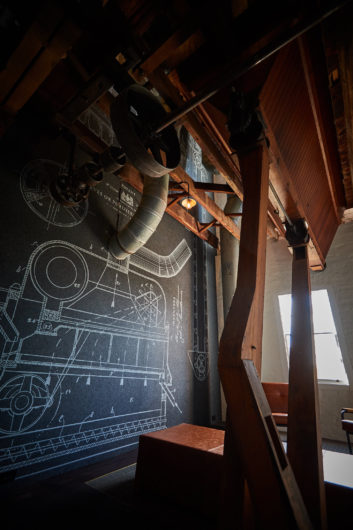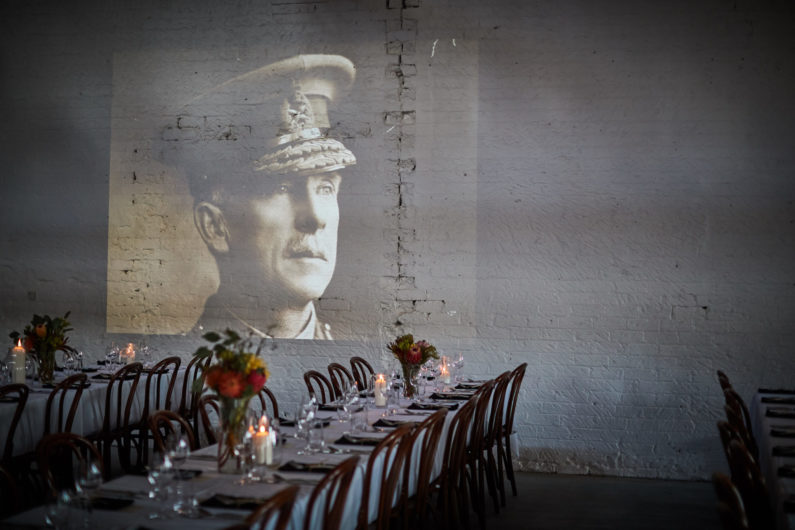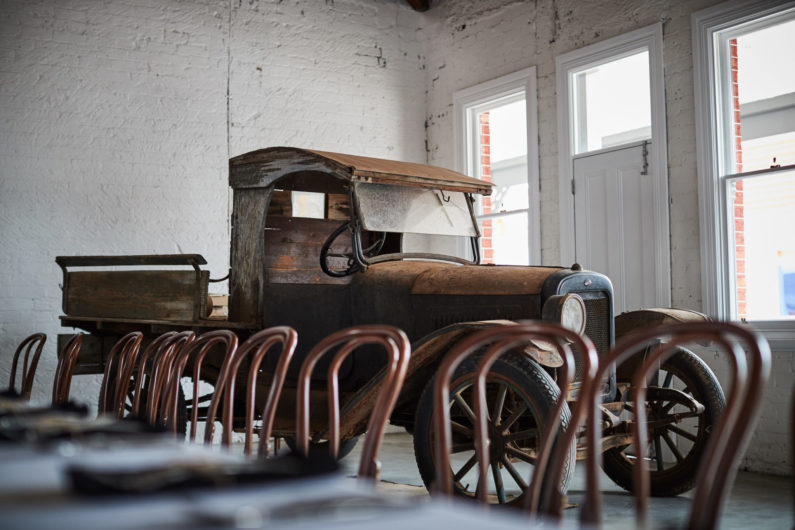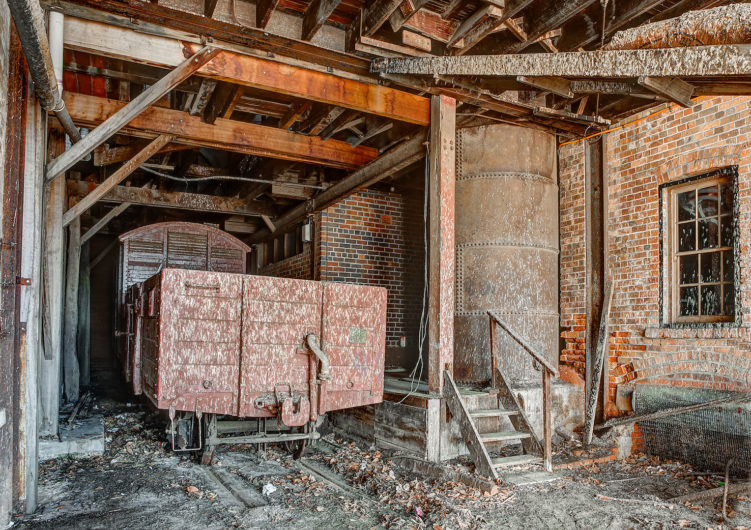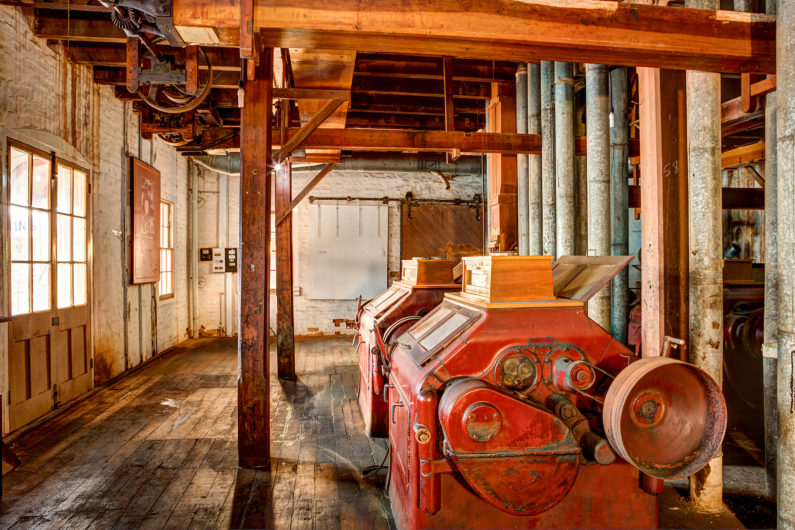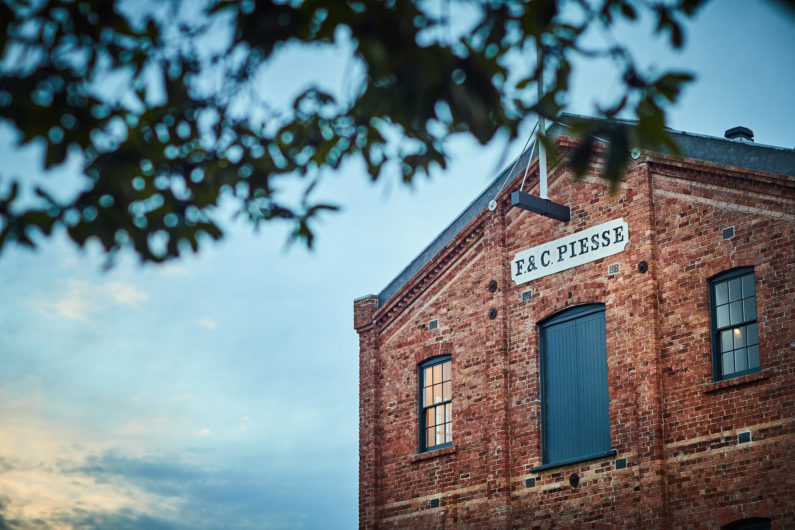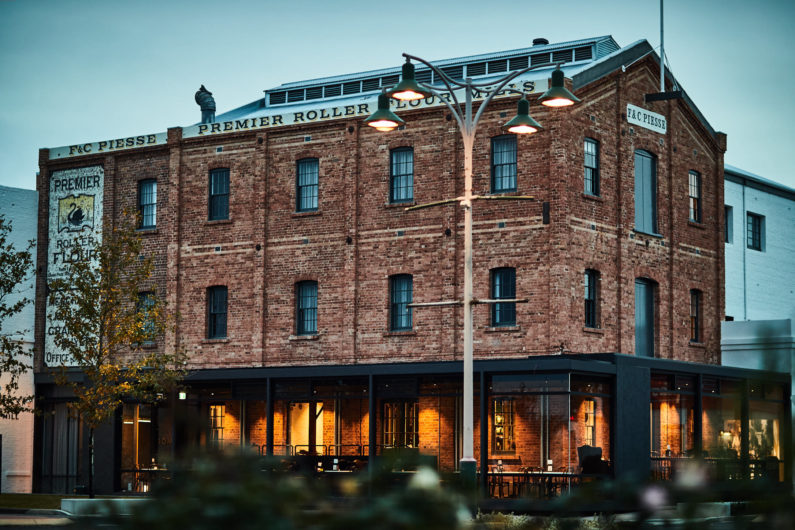The Premier Mill Hotel in Katanning, three hours south east of Perth, is a commercial renovation project undertaken by Nigel Oakey of the Dome group with architects, Space Agency. The restoration of the building is testament to the human qualities of determination, will and commitment, evident from the hotel’s remarkable, arresting street presence. It is as if this astonishing, historic building is planted in the streetscape — rooted in it, rising up majestically from its bucolic surrounds, never to be moved. To think about how it got there in its first incarnation, then in its second, is to uncover a feat of magnificent proportion — a tale of a near-impossible manifestation, reminding us that the past is not just all around us, but is intrinsic to the human condition; part of us. Far from just a hotel, however epic its journey, the Premier Mill is part of a much deeper narrative about both architectural history and the future of tourism
Q: How did the Premier Mill Hotel project start and develop over time?
A: Nigel Oakey and his business partners purchased the former flourmill and initiated design work on it, initially surveying innovative, adaptive re-use projects for hotels. They extensively researched the fascinating history of the building with a desire to transform the mill into a stylish country hotel as part of a larger vision for similar projects to stimulate tourism along the eastern inland route between Perth and Albany. This would be the first of possibly more hotel projects.
Q: What were the biggest challenges?
A: The building was originally an industrial flourmill, of particular innovation in its day, but had never been designed for habitation. It was in derelict condition, having been vacant for many years. The challenge was to reimagine the mill as a 22-room hotel including lobby, common areas and basement bar, while retaining, exposing and expressing its industrial texture throughout. Extensive integration of modern services was required to bring the building to current standards.
Q: Much is made of the history of the building and the Piesse family’s involvement. How did it feel to be involved in such a storied building and regionally significant project
A: We have worked with many historic buildings and enjoy the challenge of revealing the story they have to tell, while also bringing the buildings back into contemporary use. Frederick Piesse was an important figure in the history of Katanning who, along with his brother, commissioned the three-storey mill, designed by J.J. Talbot Hobbs c1890, occupying a prominent corner site on the main street of Katanning. Since reopening as the Premier Mill Hotel, the project has been widely embraced by locals and visitors alike and it is hoped that it will be a catalyst for more tourism opportunities in the region.
Q: What kind of identity did you envisage for the Premier Mill Hotel, once complete?
A: The client’s vision is for more than just a hotel. The building incorporates a Dome café at the street level that has proven popular with locals and also acts as a tourist information hub from which to explore and connect with the region. By partnering with the Shire Council as the provider of local tourist information and having conducted extensive research on local history, characters and the natural environment, the operators are encouraging visitors to connect with the region, from leisurely excursions to local wineries, to more adventurous outings climbing the Porongurup ranges. Other initiatives anticipated are the hosting of special events, such as unique dinners with guest chefs that celebrate local produce, drawing travelers to the area as a destination.
“the past is not just all around us, but is intrinsic to the human condition; part of us”
Q: The interior of the hotel takes you to a place full of history and authenticity, but is nevertheless modern. How did you stay true to the history and integrity of the building, while incorporating the necessities of a contemporary hotel?
A: The hotel interiors and guest rooms all respond to and respect the found condition. Wherever possible, we exposed remnant machinery in-situ, and original timber structure. New elements such as inset carpets and full-height curtains soften the industrial shell and invite habitation. Bespoke, built-in furniture was designed to complement the existing material textures; solid timber, black steel, wool and leather, adding amenity without clutter or competition. We worked with furniture designer and maker, Paul Morris of Join, to realise the design and fabrication of all in-room furniture.\
Q: Favourite design features?
A: The steel-framed lift cage and the dynamic, sculptural stair that weaves around the original boiler that was retained in-situ, rising three stories through a central void, form a dramatic feature of the lobby
Q: How were the mechanical components of the mill now on display inside the hotel, incorporated into the design?
A: The mechanical equipment was intact when the owners took possession of the mill. Some equipment had to be removed, but as much as possible was retained in-situ throughout the building. Salvaged equipment was relocated to public areas, such as the original press that printed the flour bags for the mill, which is now located in the lobby.
Q: What is the social impact on the local Katanning community of the mill?
A: The opening of the Premier Mill Hotel is a good news story for Katanning. Preserving and returning to use the historic building is a point of pride and optimism for the local community, while also offering new employment opportunities in the hotel and the café and the potential for the ripples of social and economic benefit to flow from there. The project encompasses the story of the buildings past, present and future made up of the layers of times past and times to come. It offers a new vision of the region and, it is hoped, real social and economic benefits to the local community.
https://www.katanning.wa.gov.au/
https://www.australiassouthwest.com/

